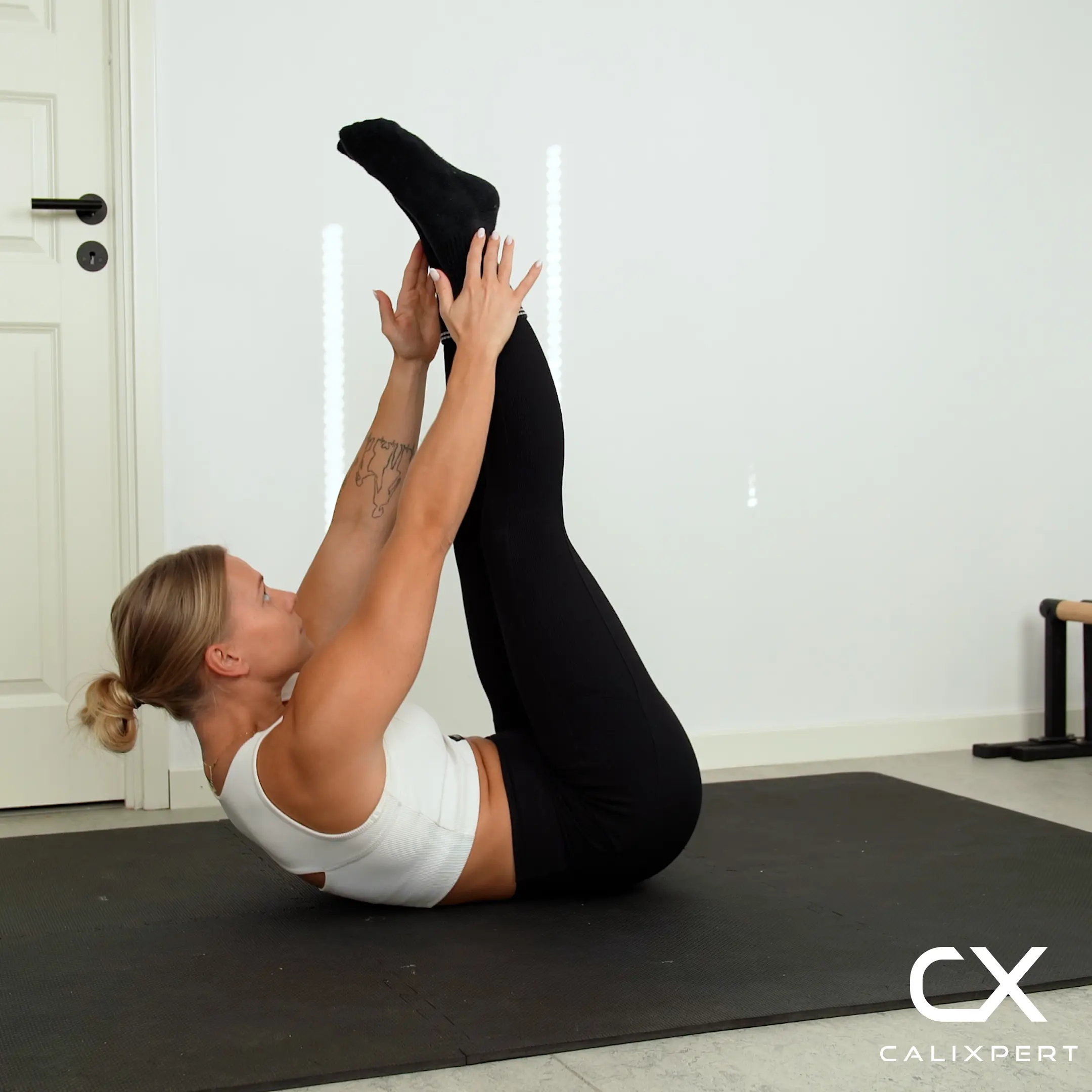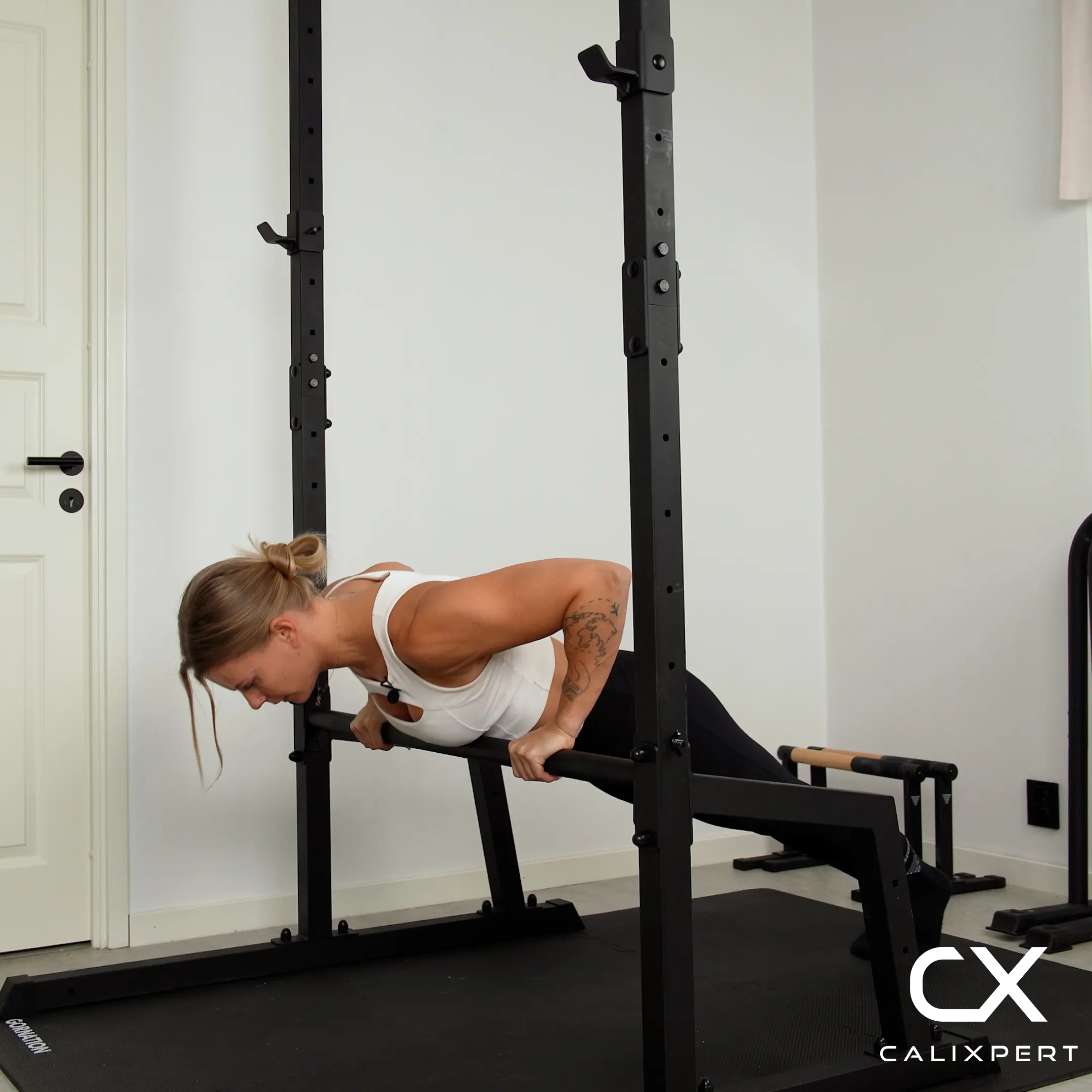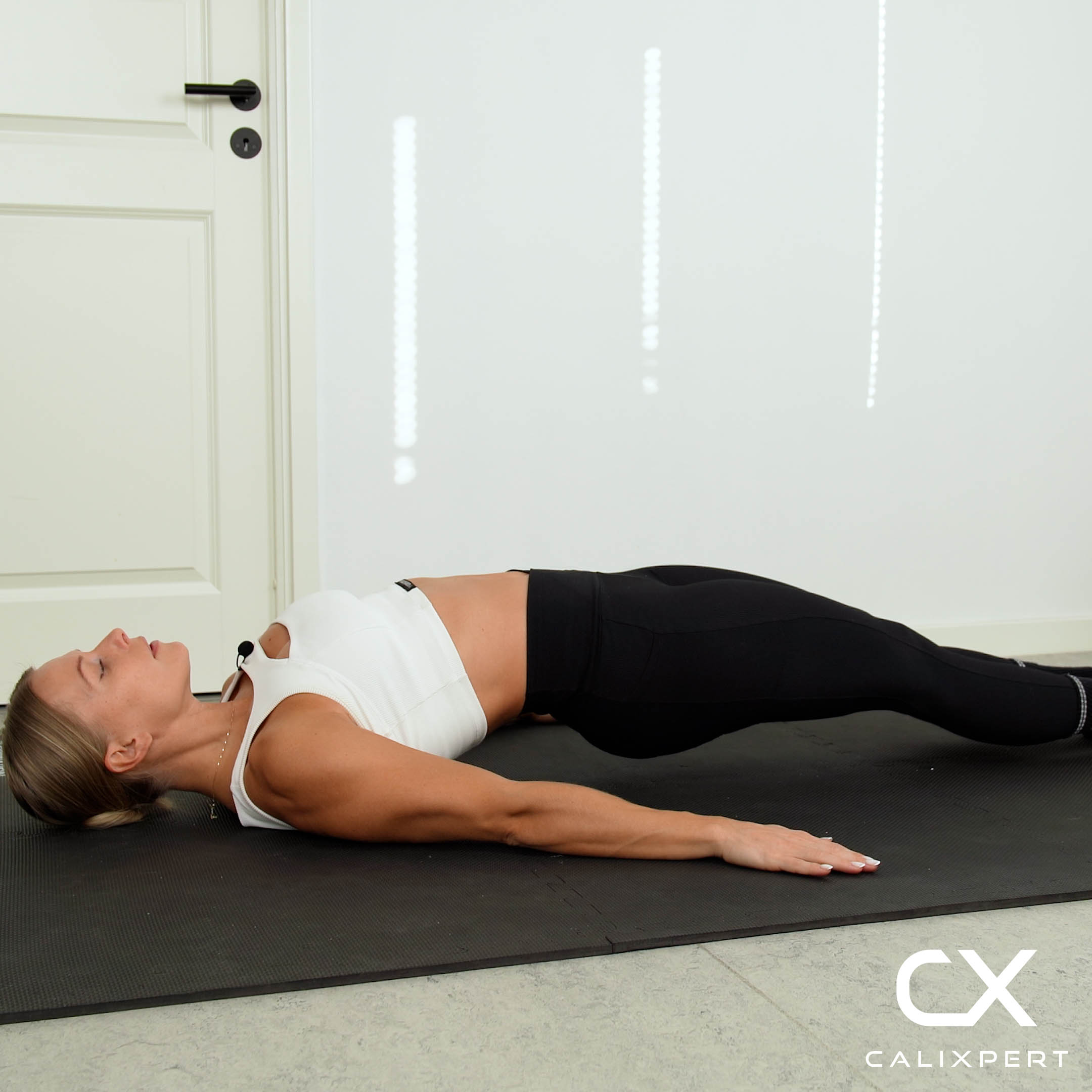How to Do Active Hang
The active hang is a foundational exercise that involves hanging from a bar with engaged shoulders and core. It helps build grip strength and shoulder stability. To perform it correctly, focus on maintaining tension throughout your body and avoid passive hanging.
Step By Step Guide to Properly Execute Active Hang
- Starting Position
- Stand under a pull-up bar and reach up to grab it with an overhand grip, hands shoulder-width apart. Your feet should be off the ground, and your body should be fully extended.
- Execution
- Engage your shoulders by pulling them down and away from your ears. Keep your core tight and your body in a straight line.
- Top Position
- Maintain the active hang position by keeping your shoulders engaged and your body stable. Avoid swinging or excessive movement.
- Lowering Phase
- To finish, gently lower your feet back to the ground while maintaining control, or release your grip if you are ready to dismount.
Benefits of Active Hang
- Improves grip strength and endurance.
- Enhances shoulder stability and mobility.
- Strengthens the core and upper body muscles.
- Prepares the body for more advanced exercises like pull-ups.
Common Mistakes to Avoid
- Avoid passive hanging by keeping your shoulders engaged throughout the exercise.
- Do not allow your body to swing; maintain a stable position.
- Ensure your grip is firm to prevent slipping off the bar.
Follow these steps and tips to master the Active Hang with proper form and efficiency.
FAQ About Active Hang
To boost your grip strength with active hang exercises, start by hanging from a bar with your hands shoulder-width apart. Keep your body straight and your shoulders slightly engaged. Try to hang for 10-20 seconds at first. As you get stronger, increase the time. Practice a few times a week, and soon you'll have a super strong grip.
Active hang exercises help make your grip stronger, which is like making your hands super strong for holding things. They also help your shoulders and back get tougher, so you can do more fun stuff like climbing or swinging. Plus, they help your body stay flexible and balanced, like a superhero!
Hold an active hang for 20-30 seconds per set, aiming for 3-5 sets. Do this 3-4 times a week. You may start seeing results in grip strength and shoulder stability within 2-4 weeks. Consistency is key, so gradually increase your hold time as you get stronger.
An active hang primarily works the lats, lower traps, and rhomboids by engaging the scapular muscles to pull the shoulders down and back. The forearms and grip muscles are heavily involved for support, while the core stabilizes the body. This exercise builds upper body endurance, improves shoulder stability, and strengthens the foundation for pull-ups and other hanging movements.






































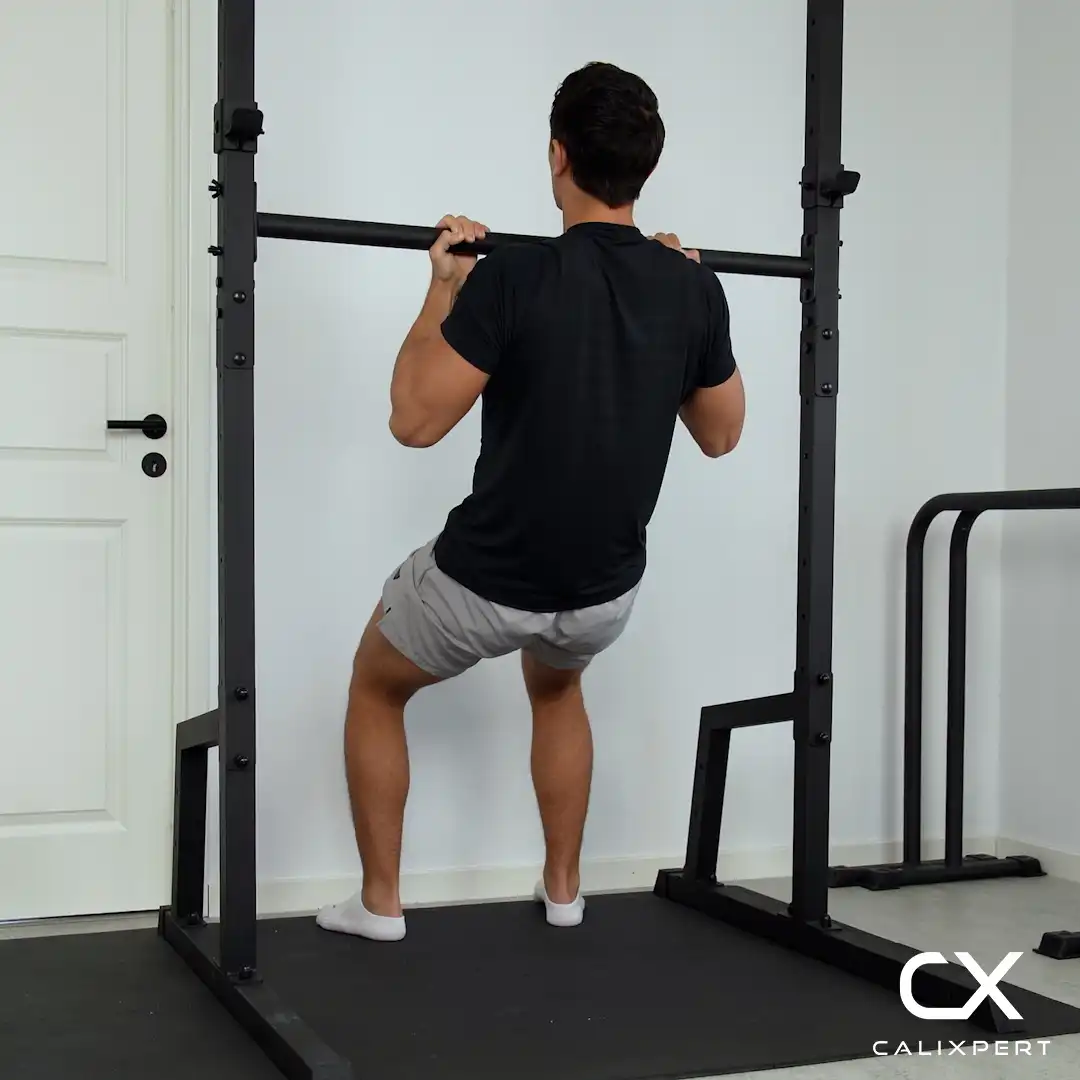










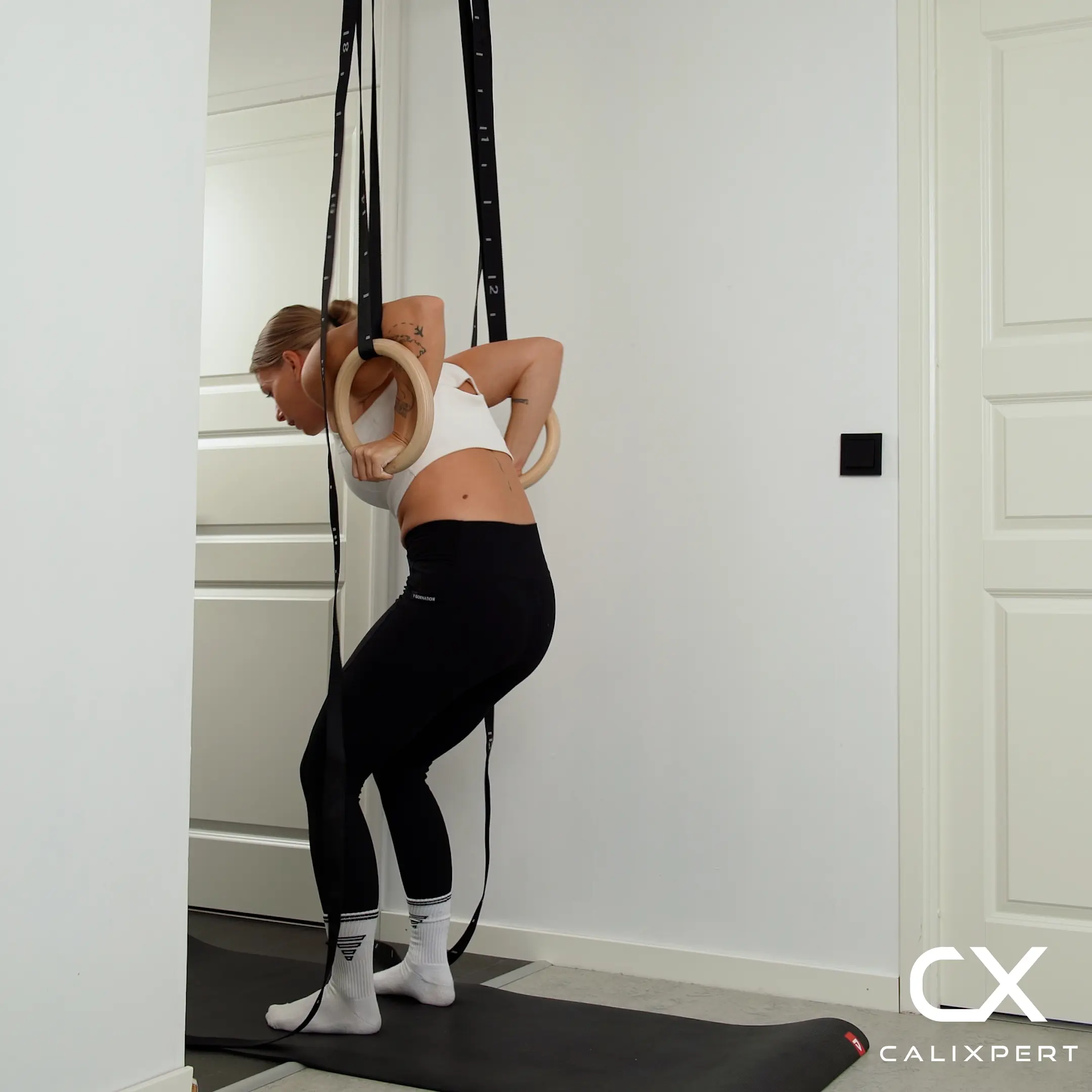



.webp)























